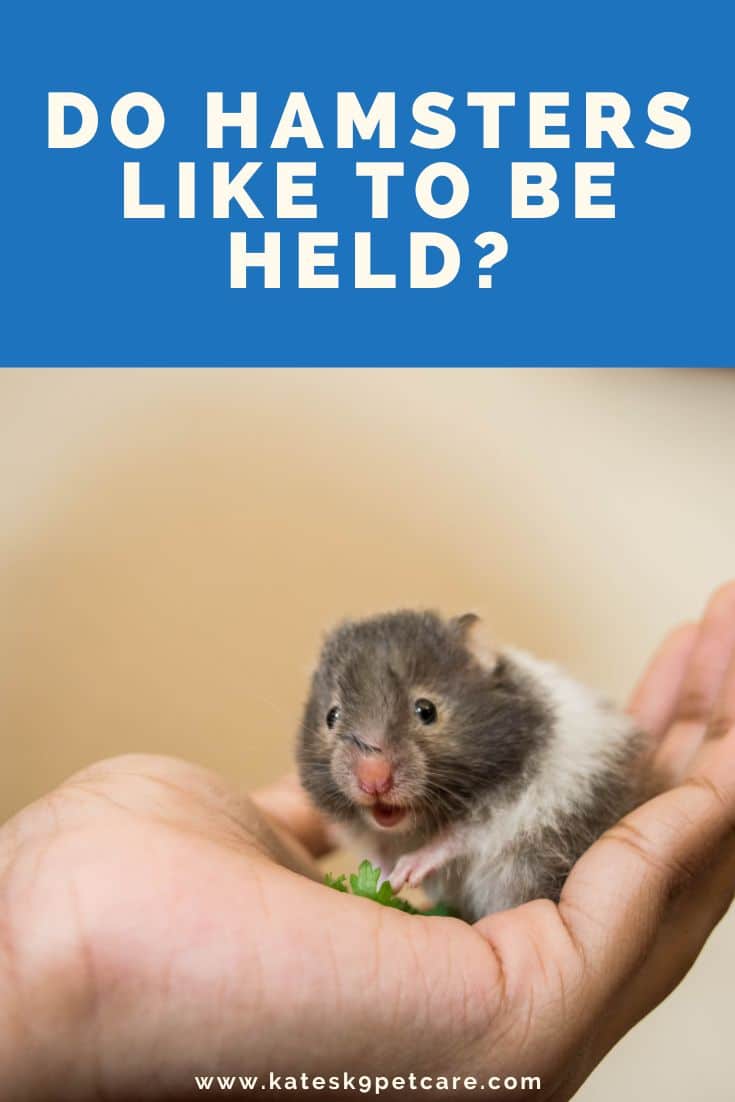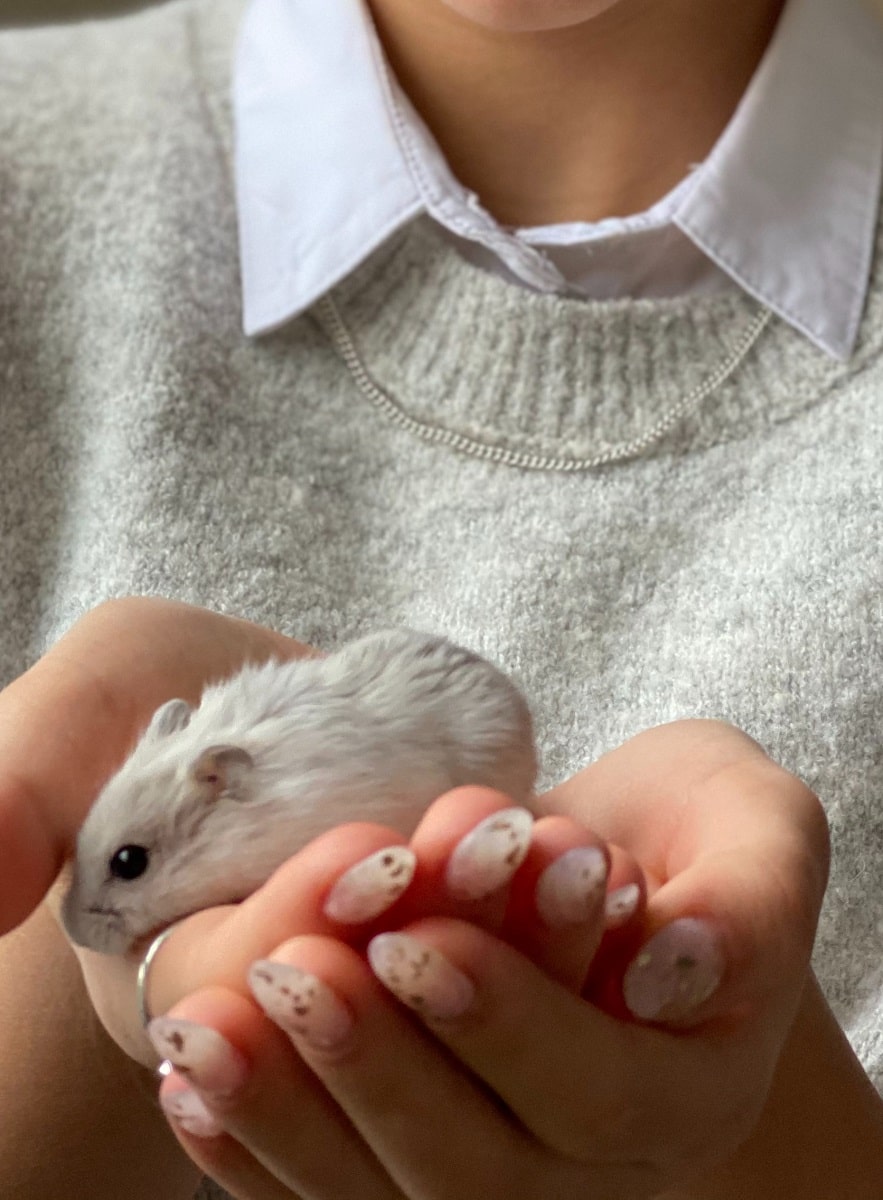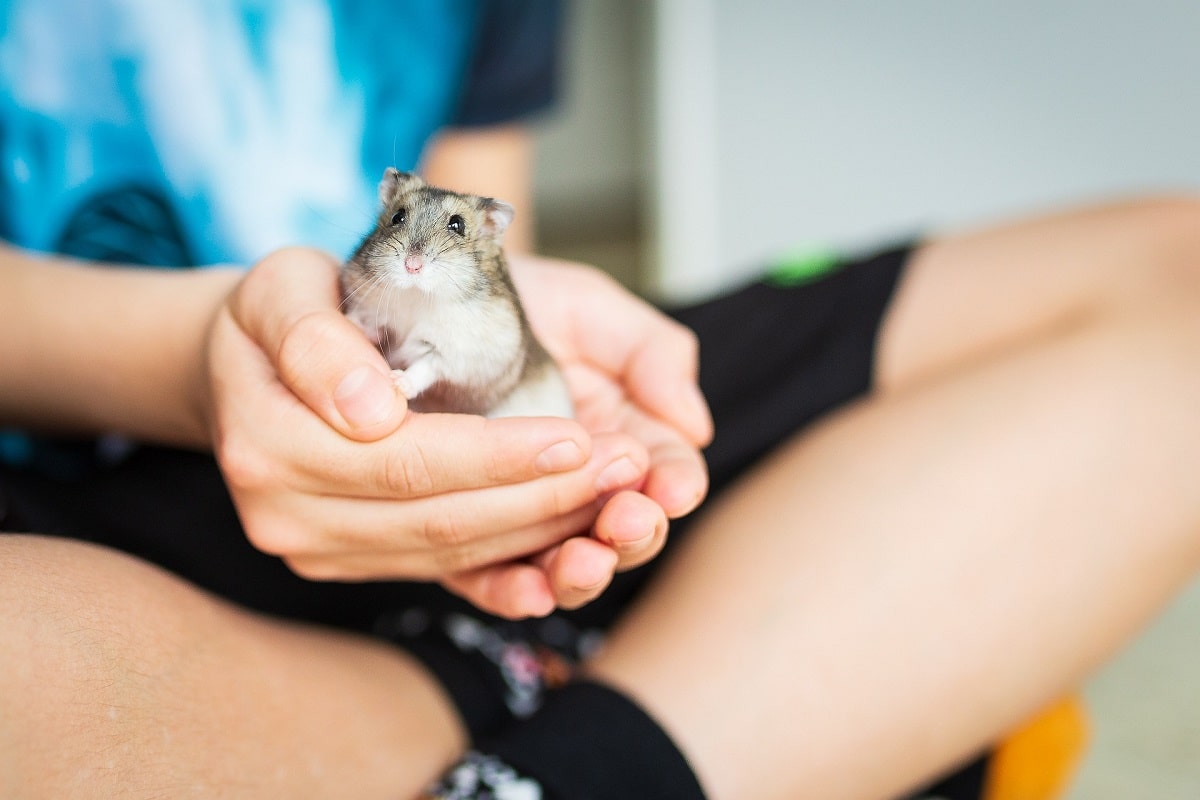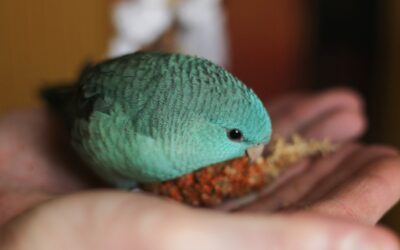If you just got a hamster of are thinking of adding one to your family, you may be wondering: do hamsters like to be held? Can you bond with yours by holding it and hanging out together, or do they prefer to be left alone? Good question!
Let’s have a look at whether hamsters like to be held, how they should be held and whether they’re considered to be cuddly pets.
Do hamsters like to be held?
The straightforward answer to this question is no, hamsters generally don’t really like to be held. It may come as a surprise to some that although they’re fluffy and incredibly cuddly-looking, these rodents aren’t at the top of the list if you’re looking for a pet that likes to be picked up and that you can hang out with for hours on end.
This especially applies to unsocialized hamsters, which will usually be startled and sometimes even try to bite if you try to hold them.
Understanding your hamster
Given that hamsters are prey animals and we’re infinitely larger than them, the fact that they don’t usually like to be held isn’t really all that surprising. In the wild, any bigger creature approaching a hamster is likely to pose a threat. Since they’re not domesticated like a cat or a dog, they retain the instinct of big = danger. A hamster that isn’t tame will be scared if you pick it up because it thinks you’re most likely going to eat it! Fleeing is a hamster’s main source of protection in the wild; if that isn’t possible, it will bite.
Add to the above the fact that hamsters are solitary and active creatures that don’t tend to sit still for very long at a time, and you’ve got a recipe for a skittish and slightly anti-social animal.
So does that mean you should never pick up your hamster, and that you’ll never be able to hold and pet it? Not entirely. It IS possible for a hamster to enjoy being held and petted, but the conditions have to be right. The “right conditions” include:
- A tame hamster will generally learn to tolerate being held and enjoy the warmth of our hands, realizing they are a safe place.
- You, as a hamster owner, should be aware of how to pick up and hold a hamster without scaring it.
- Even the most social hamsters don’t like to be held by loads of different people or for hours at a time.
Despite all this, it’s important to remember that some hamsters just never warm up to human touch. It depends on factors like their individual personalities, as well as things like previous experiences. For example, a hamster that has been handled roughly by a previous owner may unfortunately stay wary of your hands forever. This is a possibility you have to accept if you’re interested in getting one as a pet!

How should you hold a hamster?
In the next section, we’ll go into how to tame and build a bond with your hamster, which should hopefully lead to it accepting being held or even enjoying it. First, though, let’s have a look at how these rodents should be held in the first place. They’re skittish and jumpy, so it’s important to make sure yours can’t fall out of your hands and hurt itself.
Here’s how you hold a hamster:
- Cup your hands under the hamster.
- Gently lift it, though never too high. The ideal would be to sit on the ground, because it’s always possible for a hamster to decide jumping is the right course of action.
- Set your cupped hands with the hamster inside on your lap.
- If your hamster accepts it, you can give it an ear scratch and gently pet its head and back. For more nervous hamsters, just stick to offering a treat.
If you have children that will be holding the hamster, please make sure they know exactly how to do it. Aside from preventing possible injuries in your hammie, it’ll also help make sure it won’t bite out of fear!

How to build a bond with your hamster
Now that you know how to hold your hamster, let’s go into getting to the stage where it actually accepts being held in the first place. We’re assuming you just got your hammie and it hasn’t been handled much so far.
Leave it alone at first
The key to success with almost any animal is to leave it alone for a bit after you acquire it. It’s quite a shock for them to be picked out of their pet store cage, stuffed into a box and then released into a brand new territory with no idea how it all happened! If you throw curious handsy humans in the mix, it can all become a bit too much.
So give your hamster a bit of time to explore and settle in. While it does, it’s a good idea to spend plenty of time next to the cage, maybe speaking gently. This way your hamster can get used to your scent without feeling threatened.
Get it used to your hands
Does your hamster appear to be comfortable and all settled into its new home (ie. it’s nesting, burrowing, eating, pooping and not appearing overly skittish)? Great! You can now gradually start the taming process. Remember: food is the way to an animal’s heart!
Here are some steps you can consider:
- Start by offering food through the cage bars, waiting to move to the next step until your hamster accepts it. It can take a good while in some cases, but eventually it’ll give in to the temptation of a treat.
- Open the cage and place your hand, with some treats in the palm, flat on the cage floor. Avoid making sudden movements or noises.
- Eventually, place both hands in the cage so your hamster has to climb on top to get to its food.
- Once it seems comfortable with this, you can begin by lifting it a few inches off the cage floor, putting it back down and then giving a treat.
- Gradually work your way up to being able to take the hamster out of its cage. Keep offering plenty of treats. If it starts squirming, biting, squeaking or trying to run, move a step back and try again later.
Remember that most hamsters don’t like to sit still for extended periods of time. Especially in the beginning, try not to keep yours in your hands for too long.
Tip: Never chase your hamster around its cage trying to pick it up and never punish it for what you see as bad behavior. Taming a hamster is done through positive reinforcement (treats), not negative reinforcement (punishment), as they don’t associate the punishment with what they did. To them, you just attacked them out of nowhere, which can make a big dent in a hammie’s trust.
Go slow & steady
It’s important to remember that, as frustrating as it is, taming an animal so you can hold and pet it isn’t always a linear process. While one day your hamster may be fine with being lifted out of its cage, the next it might run when it sees your hand for seemingly no reason. Don’t worry! Just keep working on the taming steps.
Most hamsters will eventually accept being picked up more often than not. A hammie that feels safe and comfortable in your hands or sitting in your lap may even fall asleep! And don’t forget: taming is not something you do once and then it lasts forever. You should interact with your hamster on a daily basis to make sure your bond stays intact.
Conclusion: Do hamsters like to be held?
So, do hamsters like to be held? There’s no clear answer: it depends. An untame hamster will strongly dislike it by default. However, with plenty of bonding time and lots of treats to coax it out of its shell, the majority can be tamed to a level where they accept or even like sitting in your hands and being pet.
If you’re a (future) hamster owner, don’t forget to take a look at our other posts about hamsters!







